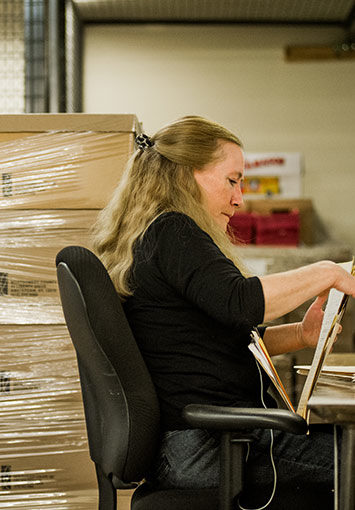Article Category
Document Scanning & Data Capture
Everything you need to know about the benefits of document scanning.
Get tips and tricks to help you better manage your data and rid your organization of antiquated paper processes. Learn about the advantages of going paperless.
Dental practices are increasingly adopting records scanning to streamline patient record management and enhance data security. By digitizing records, dentists can improve access to important information, safeguard patient privacy, and create a more efficient workflow for their staff.
Preserving irreplaceable historical and cultural records is essential for safeguarding our shared history. These fragile documents are highly vulnerable to the effects of time, making their digitization a critical step in ensuring long-term accessibility and protection.
Law firms handle an immense volume of paperwork, making efficient record management a challenge. Legal scanning services provide a practical solution, helping firms transition to a paperless practice while improving accessibility, security, and compliance with industry recommendations.
Choosing the right file type for your document scanning project can be an overwhelming decision, especially when you’re not even sure why it matters! But not every file format is created equal, and depending on your project, there is a pretty good chance that one will be better for you in the long run than
Businesses accumulate mountains of paper documents as a part of their day to day operations. From contracts and receipts to employee records and tax documents, this paperwork is an unpleasant but unavoidable part of running a business. More often than not, these documents end up piled high in a back room somewhere or stuffed into
Clear and accurate patient records are essential for delivering quality care. Digitizing patient charts simplifies records management, giving clinicians immediate access to up-to-date information while reducing the manual labor required to maintain paper files.
FADGI compliance has now become a critical part of managing digitized records, especially for federal agencies and organizations that handle cultural, historical, and public records. These guidelines, which focus on achieving high-quality digital reproductions, ensure that digitized records meet stringent quality standards, helping preserve these important documents for future generations. Whether you’re already working within
Transforming paper records into a well-organized, easy-to-use digital archive is no small task. Without the right experience or equipment, the process can quickly become overwhelming, and there’s a lot that can go wrong along the way. That’s why many businesses choose to outsource their document scanning projects to a professional company like SecureScan. Working with
Many businesses are switching from paper record-keeping systems to electronic recordkeeping. But why take on such a seemingly complex and time-consuming process? If everything is working fine as it is, why make the change? The truth is, paper is an extremely inefficient way of managing information, and businesses that still rely on it are at
As digital storage becomes more affordable and accessible, many businesses are moving away from physical documents altogether, choosing instead to store their records electronically. This makes sense, because as we all know, paper-based recordkeeping results in lower productivity, higher costs, and and poor data security. However, it can be difficult for those with a large









